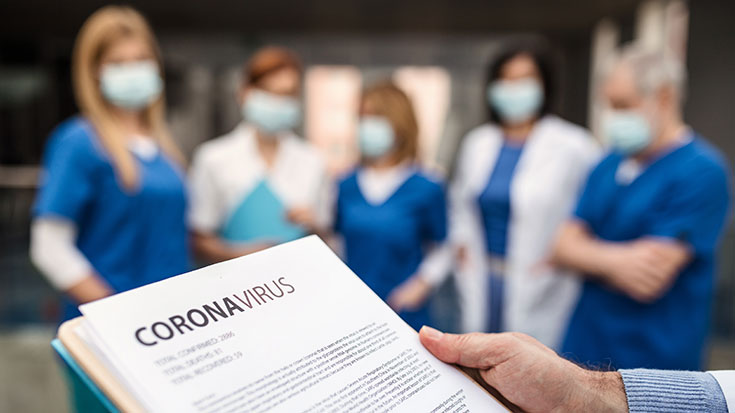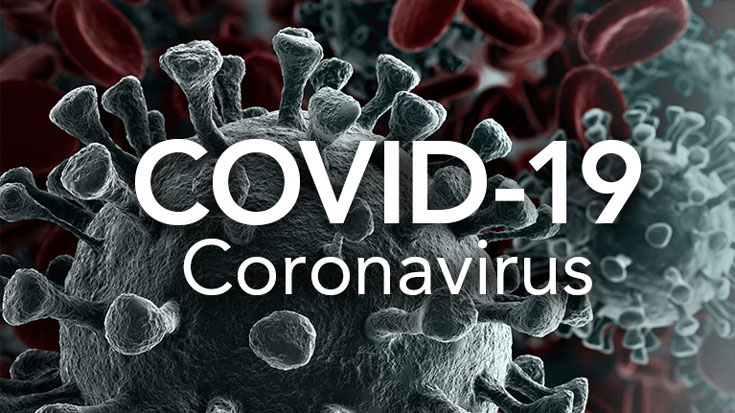
The delivery of aerosolized medications has always been a concern for respiratory therapists. The advent of COVID-19 has heightened those concerns markedly. How can you keep yourself safe while still delivering these much-needed medications to patients?
James B. Fink, PhD, RRT, FAARC, FCCP, and Arzu Ari, PhD, RRT, CPFT, FAARC, FCCP, are well known experts in aerosol therapy. In this interview, they explain the risks and how to minimize them whenever possible.
COVID-19 has raised many safety concerns among health care workers. What do you want RTs to know about the risks involved in delivering aerosolized medications during the pandemic?
James Fink: I would like RTs to know that COVID-19 is similar to most airborne droplet-carried virus pathogens, albeit quite potent. Dealing with patients during COVID should be the same as flu or cold season. We need to provide basic barrier protections so that patient (and visitor) infected bioaerosols do not reach other patients or health care workers. Part of this is patient education, having them cover their nose and mouth when possible, especially when they cough and sneeze.
Medical aerosols do not carry bioaerosols unless they are contaminated from the patient or care provider.
Arzu Ari: Although aerosol therapy is the mainstay procedure used in the treatment of pulmonary diseases, it has a potential for fugitive emissions during therapy due to the generation of aerosols as a source of respiratory pathogens. However, RTs need to know that fugitive emissions are medical aerosols that are not inhaled by the patient and pass into the atmosphere. As Fink noted, unless the device is contaminated, medical aerosols do not carry pathogens.
Therefore, using the aseptic technique during device preparation, wearing personal protective equipment, practicing healthy hand hygiene, and adhering to infection control and prevention practices are extremely important in minimizing the risk involved with the delivery of aerosolized medication in this pandemic.
The upside of this pandemic is that we learned the importance of personal protection and infection control. Also, respiratory therapists have enormous experience in aerosol therapy and the foundation of delivering aerosolized medications to coronavirus infected patients and should be grounded in their experience and current guidelines on COVID-19. RTs will be okay as long as they ensure device effectiveness and safety by selecting the right device for the right patient after a careful evaluation of device features and patient characteristics, as well as the potential risk for device contamination and viral transmission.
What do you believe are the best ways to minimize the risks associated with the delivery of aerosolized medications, and why?
James Fink: Use devices in such a way that they are not readily contaminated. When administering aerosols, use expiratory filters to reduce fugitive aerosols from exiting the patient into the environment. This reduces your exposure to both patient-generated bioaerosols and medical aerosols that were ordered for the patient, not for you and other bystanders to breathe.
If you don’t know who is infected in the clinic or hospital, have visitors and patients all wear a mask — it can reduce 80% of the risk. And if you don’t know about them, you need to wear a mask. It might not be ”fun” but it can reduce exposure to you and others.
Arzu Ari: Given the importance of disease management in the era of COVID-19, it is essential to translate the risk of using aerosol devices into an evaluation of not only the device but the patient to recommend an appropriate device tailored specifically to patients’ abilities and clinical conditions. Here are some recommendations for my colleagues —
- It is crucial to avoid unnecessary aerosol therapy for patients with COVID-19.
- Inhalers should be preferred over nebulizers in mild-coronavirus infected patients who can perform specific breathing techniques.
- When the drug formulation is not available as an inhaler, nebulizers can be used after attaching a filter to the exhalation port of the nebulizer.
- If aerosolized medications are delivered via the high flow nasal cannula, a surgical mask should be placed on the patient’s face to prevent the dispersion of exhaled aerosols into the atmosphere.
- It is essential to keep the ventilator circuit intact during mechanical ventilation because breaking the circuit for device placement will increase the dispersion of exhaled bioaerosols into the environment. Therefore, mesh nebulizers should be preferred for aerosol delivery and placed before the humidifier in ventilator-dependent patients with COVID-19. Another alternative is to use the jet nebulizer with a valved T-piece.
- Unvented facemask and dual limb circuits should be preferred for aerosol delivery to patients with COVID-19 receiving noninvasive ventilation.
- Attaching a HEPA filter to the expiratory limb of ventilator circuits will decrease secondhand aerosol exposure and viral transmission to the environment.
- Respiratory therapists should wear personal protective equipment and deliver aerosolized medications in negative pressure rooms.
What can front-line RTs do to promote these safety measures in their hospitals and why should they take the time to do it?
James Fink: Follow the rules, and don’t take shortcuts. Make sure patients have tissues at the bedside and encourage them to cover when they cough or sneeze. Change practices to be safe, not just for this COVID pandemic today, but for all infectious airborne transmitted diseases in the future.
Work with your administration to make sure the safest types of aerosol devices and filtering options are available. Whenever possible, use expiratory filters on ventilators, NIV circuits, and nebulizers. Place a simple mask over nasal cannula, high or low flow, with and without medical aerosols.
The relationship between RTs and medical aerosols has posed dangers for many years, from rebreathing medicine (fugitive emissions) not inhaled by the patients to being exposed to patient generated bioaerosols. This is the opportunity to make medical aerosols safer for now and for the future.
Arzu Ari: The COVID-19 pandemic is an opportunity for respiratory therapists to strengthen crucial aspects of infection prevention and control infrastructure in their institutions. They can provide much-needed leadership on the purchase of good quality infection prevention and control materials, address any deficiencies in the infrastructure, and play a crucial role in the proper training of all health workers on the best infection prevention and control practices. Thus, they can form active infection prevention and control practices that will be valuable not only during the COVID-19 pandemic but also in the fight against other infectious diseases.
Also, there is so much negative information about COVID-19 that can make respiratory therapists concerned. Although negativity is infectious, RTs should remember that the choice does not belong to pessimism and scare; it belongs to them. I am an optimist and believe that there is always light somewhere. I suggest finding the good in what we have, enjoying good things in our lives, and being thankful for everything we have. This will give us the strength that we need until we see the light at the end of the tunnel.
James Fink is a visiting professor at Texas State University in San Marcos, and adjunct faculty member at Rush University in Chicago, IL. He has published more than 125 papers on aerosol therapy in peer review journals.
Arzu Ari is an associate dean for research at Texas State University. She has published 72 papers on aerosol therapy in peer review journals.
Email newsroom@aarc.org with questions or comments, we’d love to hear from you.














